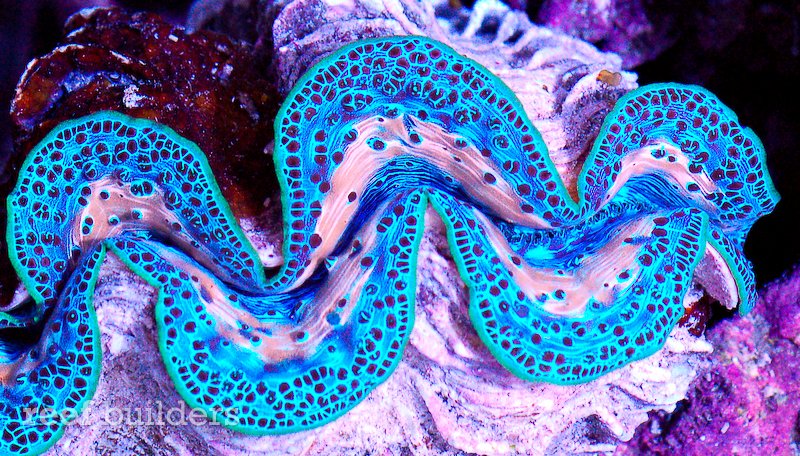Tuamotu Maxima clams are the hottest thing to hit the Tridacna reef scene since the Maxea hybrids from earlier in the year. This past week a shipment of large magnificent Tridacna maxima was imported into the U.S. by Pacific Aqua Farms from atoll lagoons of East Tuamotu, a very special ecoregion for Maxima clams that is unlike any other place on earth.

The specimens that were imported in this shipment had such a diversity of color, vibrance and patterns that this could be the best shipment of clams ever imported, rivaling even Phonpei and Red Sea clams of decades past. Perhaps it’s because T. maxima is the only naturally occuring giant clam species in the region.
Maybe it’s because the clams are collected in a lagoon where the species forms hills and islands consisting solely of their shells that are so abundant in the region that they have a name: ‘mapiko’. It could be that due to apparently well laid out resource management the size of the harvested clams have to be greater than 12cm, or almost 5 inches.

Whatever the reason (probably all of these mentioned), like collecting corals from the Coral Triangle, harvesting a giant clam species where it occurs at reef building densities of 200 individuals per square meter is like picking the ripest produce right at the farm; it’s bound to be good! A good number of these Atoll lagoon-born East Tuamotu clams have already been distributed to finer retailers around the country.

Although the clams just arrived last week, BlueZoo is already selling these bad boys. Look for these to start showing up at your favorite livestock vendors once they’ve settled in and been quarantined and conditioned. For all of you that are about to start crying over the removal of these magnificent Maxima clams from their environment consider this:
The annual quota of Maxima clam flesh for human consumption in Tahiti and Tuamotu is 50 tonnes. That’s a 100,000 lbs without the shell. Tuamotans and Tahitians really eat a lot of clam meat and our handful of live specimens will never compare with the numbers of Maxima clams that make it to their kitchen table. This shipment of clams was a long time in the making with full resource management plans implemented, documentation, CITES paperwork and future accountability for the sustainability of the resource.

Furthermore, giant clam aquaculture is nascent in the East Tuamotu islands and we should expect to see the progeny of these magnificent Tuamotu Maxima clams entering the global reef aquarium market in the next few years. Huge thanks to Kris Wray and Kevin Kohen for supplying most of the pictures, many more of which can be seen after the break.
LiveAquaria is babying a small treasure trove of these bivalved gems in a 6-months-clam-free system: the clams will be inspected daily for pyramidellid snails, enriched with Reef Nutrition Phyto-Feast and of course, baked in the most nutritious reef light that 400 watt metal halides can deliver. Lookout for these to start showing up in the Divers Den in about a week or so. Nom, nom, nom. . .














